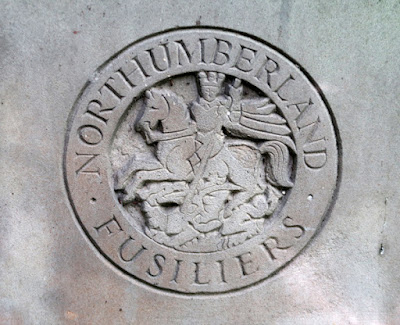My day out to York with the Treeton Local History Group was very enjoyable and, although I would balk at the £8.60 entrance fee if I had to pay this myself, I did appreciate seeing Clifford's Tower and having a good long walk around York to photograph its historic buildings.
A few days later I set off to explore Dewsbury, only to arrive in Wakefield to discover that Arriva buses had announced a strike at midnight, despite the customer services at West Yorkshire Metro telling me that there was no pending strike action when I spoke to them the day before. Having not yet planned any other full days out, I decided to spend the following Saturday morning by taking a walk around Rawmarsh in Rotherham, to photograph a handful of buildings for the British Listed Buildings website, before going to the Parkgate Shopping Centre.
Having alighted from the bus at the High Street/Haugh Road stop, I had a quick look at the unlisted Rawmarsh Methodist Church (1908), which was designed by the Sheffield architect WJ Hale, whose work I was familiar with at the Wesley Hall, Hale Court and Congregational Church in Crookes and the Bole Hill, Hammerton Street and Lydgate Lane Sheffield Board Schools.
Various architectural elements, such as the tracery and the square flat topped buttresses, are shared in common with his other Methodist churches, as are the very elaborate carvings above the main entrance. At Hale Court, the Historic England description states that the carvings are by Frank Tory and it makes me wonder if the very distinctive style of the carvings on his later churches are also by him.
Also, looking at the stones used, they do not look like anything that I have seen in the Rotherham area, where the Rotherham Red variety of the Mexborough Rock is the only sandstone that developed any kind of reputation as a building stone. The walling looks similar to the Crawshaw Sandstone from Bole Hill, with the dressings looking like Stoke Hall stone, which both feature in all of Hale’s work that I have seen in Sheffield.
Walking down High Street to St. Mary’s church, I briefly walk around the adjoining cemetery, which is overgrown and slowly reverting to woodland, where plain slabs constituted the dominant type of monument, but I did find a headstone that was decorated with crockets and a sculpted angel.
Although I hadn’t set out to find them, I did also see one of the three Commonwealth War Graves Commission (CWGC) headstones, made in Stancliffe Darley Dale gritstone, which commemorates Private W. Hargreaves of the Northumberland Fusiliers.
I had already seen this regimental crest at Woodhouse cemetery, where the headstone is made in a granite, which the reply to query sent to the CWGC suggests is either Vire Blanc or Glenaby from France, but the design of the crest on granite is not easy to see.
In St. Mary’s churchyard, there are some large Georgian headstones with fine examples of calligraphy and letter cutting and, having photographed the Grade II Listed St. Mary’s rectory on the opposite of the road and the church railings, I had a brief look at the church itself.










No comments:
Post a Comment